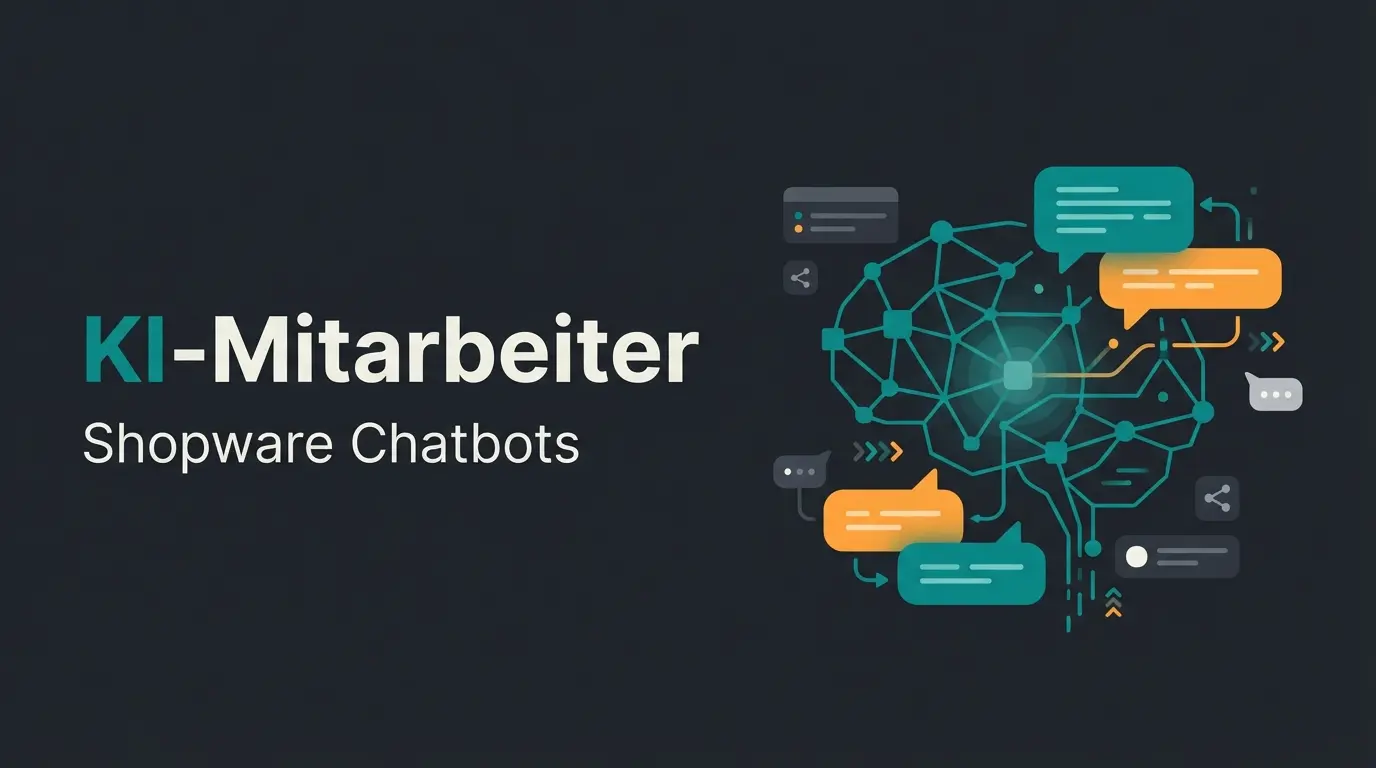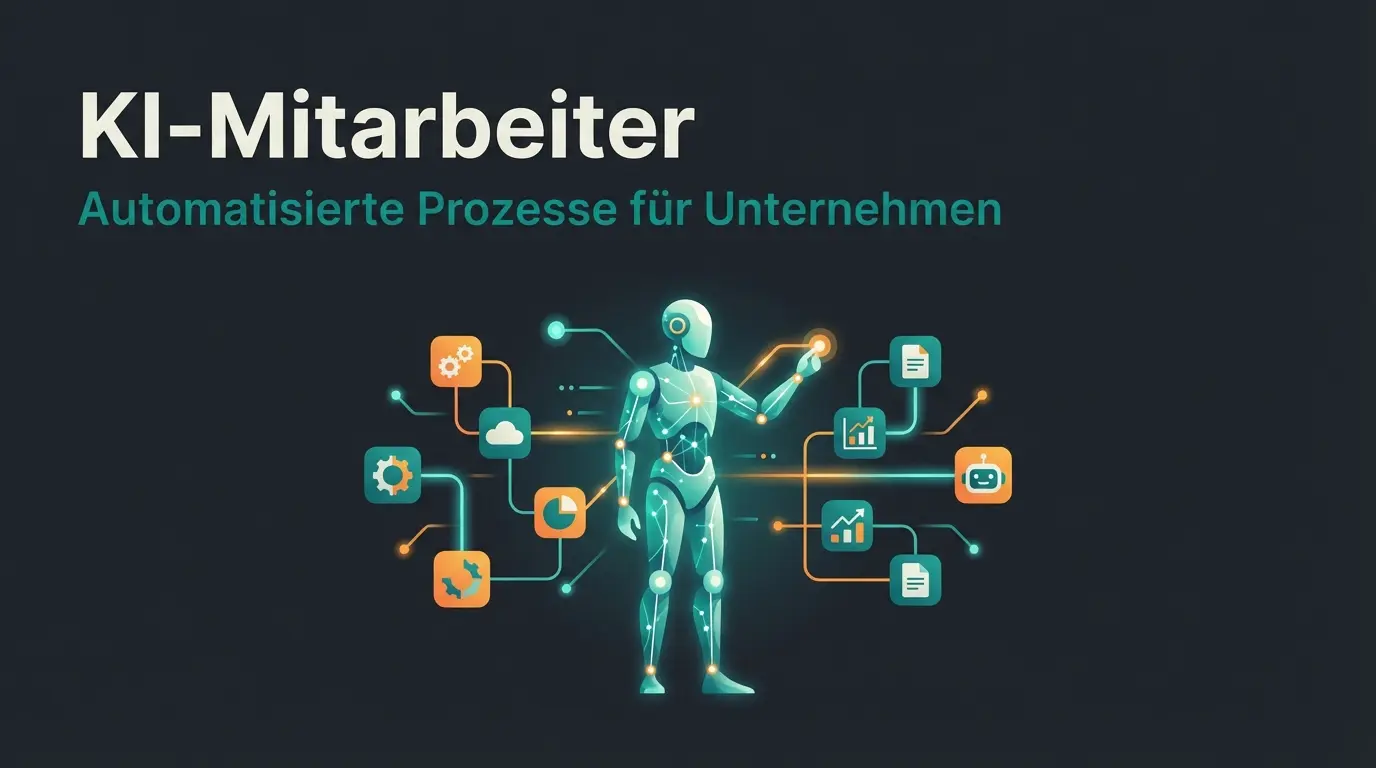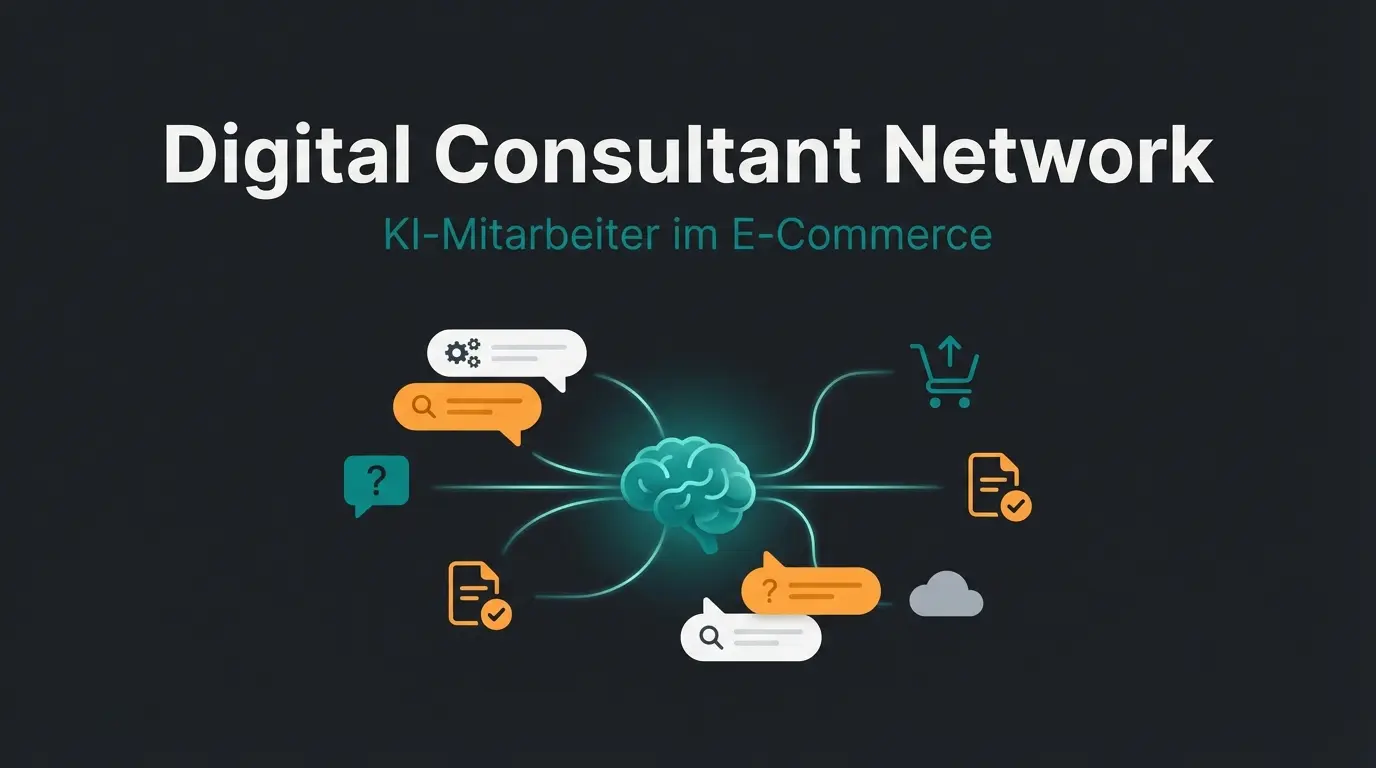Conversational AI in the DACH Market: Why Chatbots Must Become Digital Consultants
Discover why the DACH market is shifting from reactive chatbots to proactive Conversational AI for digital product consultation. Explore top providers and strategies.
Introduction
The DACH market for Conversational AI is developing dynamically. Intelligent dialogue systems are shaping digital communication between companies and customers. AI-supported systems enable personalized interactions in real-time—around the clock and in various languages.
According to current figures from Grand View Research, the German market for Conversational AI will reach a volume of over 800 million euros by 2025. This corresponds to an annual growth of more than 20%. Medium-sized companies, in particular, are increasingly relying on AI chatbots and automated customer service solutions.
The demand for German-language AI solutions is rising steadily. More and more DACH companies are recognizing the potential of the technology for customer service, marketing, and sales. German Conversational AI firms are benefiting from this trend and expanding their market position.
Technology Status 2025: Beyond Simple Scripts
The technological development of Conversational AI is progressing rapidly. The central difference between classic chatbots and modern Conversational AI systems lies in the depth of processing. AI-supported solutions understand the context of a conversation and can react flexibly to different inquiries.
Current studies on market development show: Large Language Models (LLM) form the technological basis of modern Conversational AI. The systems learn continuously from interactions and improve their communication skills. German providers are increasingly integrating industry-specific expertise into their AI models.
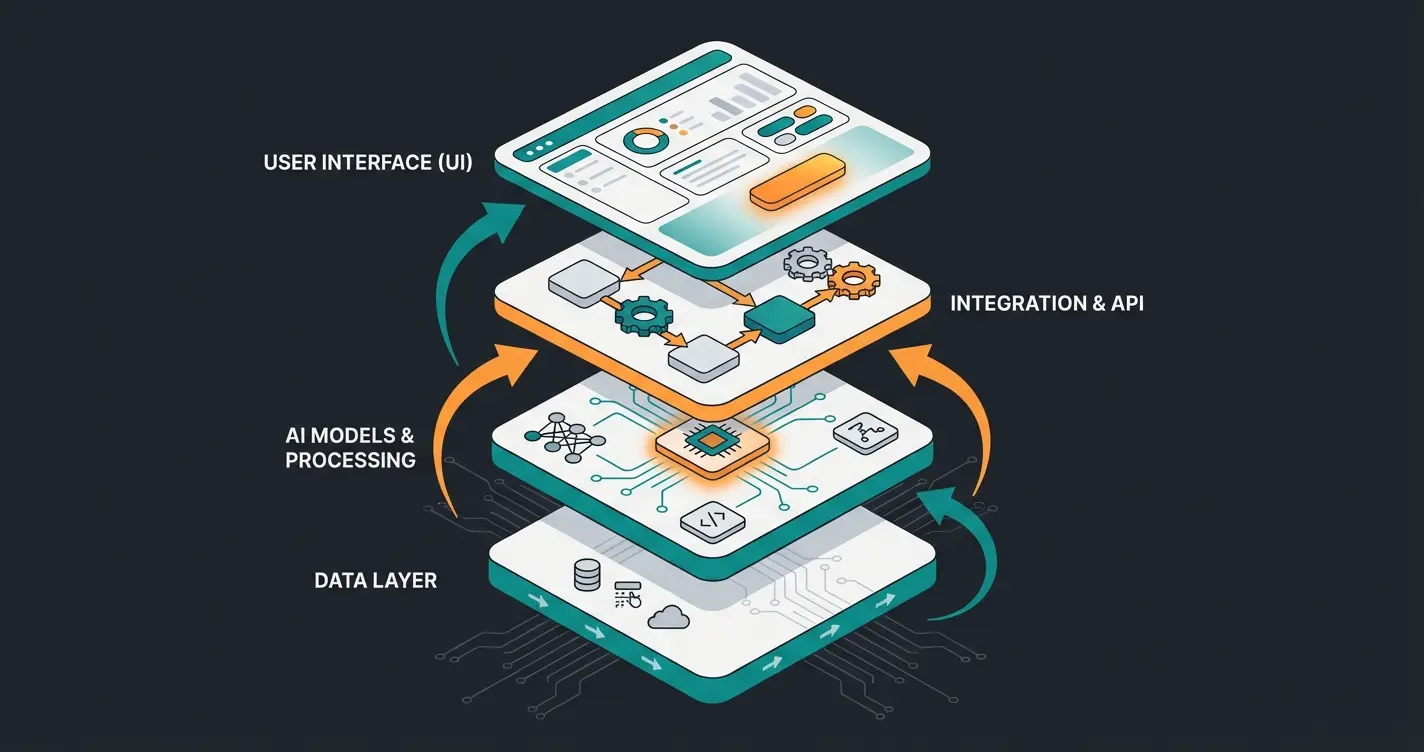
In the DACH region, companies such as Deutsche Bahn, Vodafone, and various insurance companies are successfully relying on Conversational AI. The systems handle customer inquiries, appointment scheduling, and—crucially—product consultation. Through the integration of Natural Language Processing in the German language, they achieve a high level of understanding accuracy.
Technical integration takes place via APIs and cloud services. Modern Conversational AI platforms offer pre-built connectors for common CRM and ERP systems. This enables fast implementation while maintaining high data security in accordance with European standards.
Strategic Pivot: From Answering to Advising
While many companies focus on automating support tickets, the real opportunity in the DACH market lies in Digital Product Consultation. German consumers are known for being detail-oriented and research-heavy. A simple FAQ bot frustrates them because it cannot answer complex "Why" or "Which" questions. To truly succeed, businesses must shift their focus from reactive answering to proactive advising.
| Feature | Standard Chatbot | Conversational AI Consultant |
|---|---|---|
| Primary Goal | Ticket Deflection (Cost Reduction) | Sales & Consultation (Revenue Generation) |
| Interaction Style | Reactive (Waits for keywords) | Proactive (Asks clarifying questions) |
| User Feeling | "I hope it understands me" | "I feel understood and advised" |
| Complexity Handling | Low (Links to FAQ articles) | High (Synthesizes product data for recommendations) |
The Digital Consultation Funnel
To implement this advisory approach, companies need to view their AI not as a support agent, but as a top-performing salesperson. The process moves beyond simple Q&A to a structured consultation funnel.
The AI asks context-aware questions (e.g., 'What terrain do you ride on?' instead of just 'Search for bikes').
The system filters the product catalog based on user responses and technical constraints.
The AI proposes specific products and explains *why* they fit the user's needs.
The AI answers doubts about price or specs using persuasive data, leading to checkout.
Ready to move beyond basic chatbots? Build a digital consultant that drives revenue.
Start Your Free TrialTop Conversational AI Providers in the DACH Region
The DACH market for Conversational AI has developed strongly in recent years. The leading providers of AI solutions offer highly developed systems for various industries and use cases. Below is an overview of the key players.
Qualimero
As a leading provider of Conversational AI in the DACH region, Qualimero offers a highly developed platform for digital employees that efficiently automates customer service, sales, and internal processes. The AI solution is GDPR-compliant, offers deep integration into existing IT systems, and features advanced NLP capabilities for the German language.
- Pros: High scalability, strong personalization, GDPR-compliant.
- Cons: Higher initial investment compared to simple bots.
Cognigy
The company from Düsseldorf has established itself particularly in the enterprise segment and offers scalable systems with multilingual support.
- Pros: Good scalability, strong multichannel support.
- Cons: Complex integration.
Parlamind
A Berlin-based provider specializing in AI-supported customer service automation. Particularly popular with medium-sized companies.
- Pros: Fast implementation, good automation.
- Cons: Limited customization.
Spitch
A Swiss company focusing on voice technology and Voice-AI, specifically for the finance and healthcare sectors.
- Pros: Strong Voice-AI, industry-specific solutions.
- Cons: Limited availability outside the finance industry.
Rasa
An open-source platform with strong adaptability for companies that want to develop their own AI solutions.
- Pros: Open source, high flexibility.
- Cons: Requires technical know-how.
Botpress
AI platform with a focus on low-code development and easy integration into existing systems.
- Pros: User-friendly, fast implementation.
- Cons: Limited deep AI functionality compared to enterprise suites.
IBM Watson Assistant
One of the world's most well-known providers with comprehensive AI-supported automation solutions.
- Pros: High performance, extensive features.
- Cons: High costs, complex setup.
Tidio
Particularly suitable for smaller companies looking for a simple and cost-efficient Conversational AI solution.
- Pros: Cost-effective, easy to use.
- Cons: Limited scalability.
Implementation Guide: How to Get Started
Integrating Conversational AI requires a structured approach. The right selection process begins with an analysis of your own requirements and a careful evaluation of available providers.
1. Systematic Selection Process
Selecting a suitable Conversational AI solution requires a thorough analysis. A detailed needs assessment should include the following aspects:
- Use Cases: Definition of primary scenarios (Support vs. Sales) and communication channels.
- Integrations: Analysis of required interfaces to existing systems (CRM, PIM).
- Language Support: Determination of required languages and local dialects.
- Data Protection: Identification of legal requirements and compliance specifications.
2. Technical Integration
The technical integration of a Conversational AI platform must be planned carefully. Seamless integration into existing IT infrastructures is particularly important. A step-by-step implementation with test phases minimizes risks and enables continuous optimization.
Integration into AI-supported customer service should consider various communication channels, including Messaging (WhatsApp, Messenger), Website widgets, automated email processing, and telephony (Voice-Bots).
3. Team Onboarding and Training
Introducing AI in customer service must be well prepared. Employees need training on how to handle the new technology—viewing it as a colleague, not a replacement. Clear communication of goals and expected improvements is essential for acceptance within the team.
4. Common Pitfalls and Solutions
Various challenges can arise during implementation. Early detection and remediation of these problems are crucial for project success. Typical challenges include:
- Data Quality: Insufficient training data leads to poor AI performance.
- Integration: Interface problems with legacy systems.
- Acceptance: Resistance from employees fearing job loss.
- Performance: Slow response times or incorrect outputs due to bad configuration.
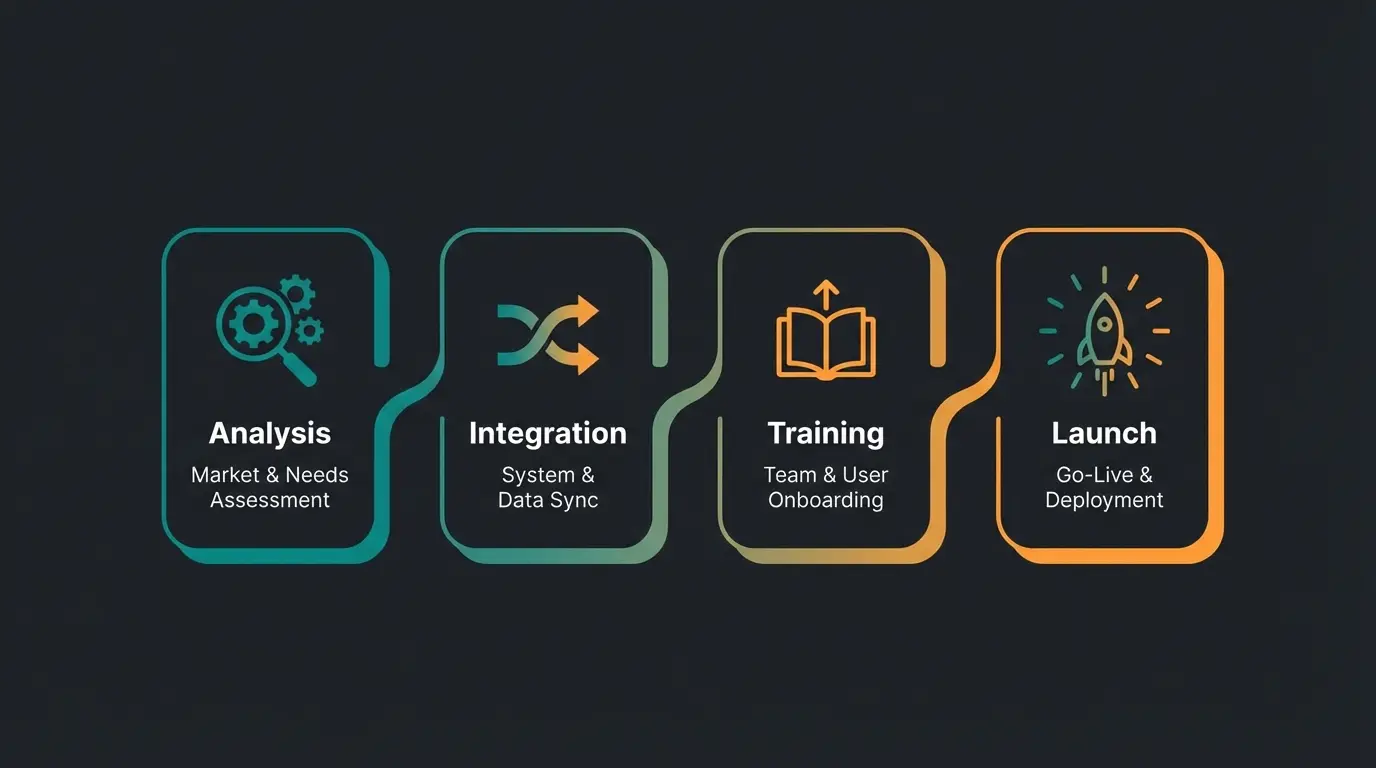
Market Outlook and Future Trends
The market for Conversational AI continues to develop dynamically. New technological developments and rising customer expectations are driving innovations. The DACH region is showing particularly strong growth.
Projected total market volume in the DACH region.
Compound annual growth rate (CAGR) expected through 2030.
Percentage of companies planning AI integration by 2025.
Future years will bring significant technological advances. Current market analyses show clear trends toward Multimodality (integrating text, voice, and visuals), Hyper-personalization (contextual adaptation), and Automation (extended self-service capabilities).
Regulation & Compliance: The EU AI Act
With the entry into force of the EU AI Act, Conversational AI systems must meet strict requirements. These regulations specifically affect:
- Transparency in AI-supported communication (users must know they are talking to an AI).
- Data protection and GDPR conformity.
- Ethical guidelines for AI deployment.
- Documentation obligations for training data.
Conclusion
The importance of Conversational AI in the DACH region continues to increase. Companies benefit from more efficient communication processes and an improved customer experience. Qualimero leads the market with a powerful and flexible solution that supports companies in taking their digital communication to the next level. With a multitude of providers on the market, companies should carefully weigh the advantages and disadvantages to find the best solution for their individual requirements.
A standard chatbot usually follows rigid rules and keywords (if/then logic). Conversational AI uses Natural Language Understanding (NLU) to grasp the context and intent behind a message, allowing for dynamic and human-like advice.
Not automatically. In the DACH market, it is crucial to choose providers that host data within the EU and adhere to the strict guidelines of the GDPR and the new EU AI Act.
Implementation time varies by complexity. Simple FAQ bots can be live in days, while deep integration for product consultation and CRM connectivity typically takes 4-8 weeks.
AI is best used to scale consultation for standard queries and initial guidance, freeing up human experts to handle complex, high-value cases. It enhances the team rather than replacing it.
Don't just answer questions—guide your customers to the right decision with Qualimero's Conversational AI.
Get a Demo
